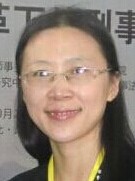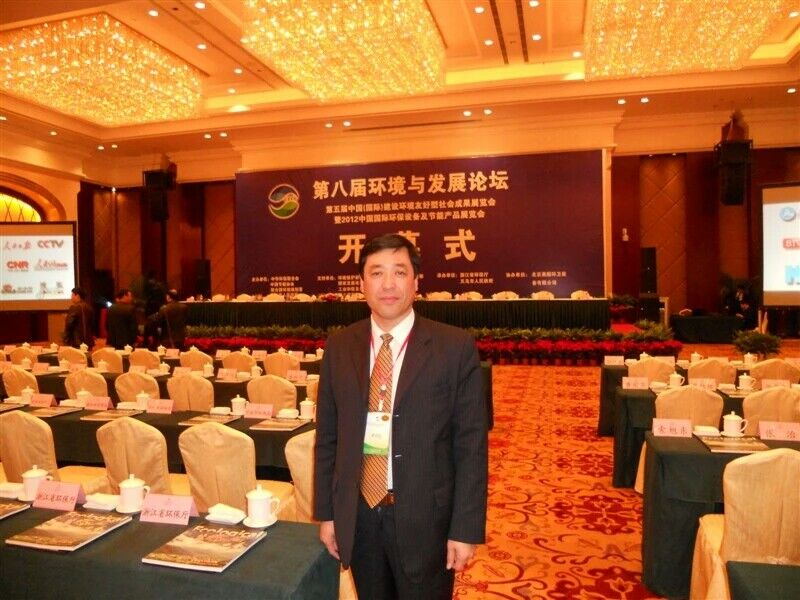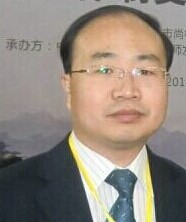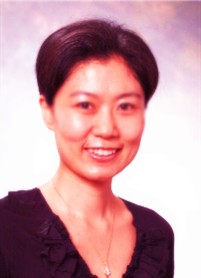The World Intellectual Property Organization (WIPO)
History
1.7 The World Intellectual Property Organization (WIPO) is one of the specialized agencies of the
United Nations (UN) system of organizations. The ��Convention Establishing the World Intellectual
Property Organization�� was signed at Stockholm in 1967 and entered into force in 1970. However,
the origins of WIPO go back to 1883 and 1886, with the adoption of the Paris Convention and the
Berne Convention respectively. Both of these conventions provided for the establishment of
international secretariats, and both were placed under the supervision of the Swiss Federal
Government. The few officials who were needed to carry out the administration of the two
conventions were located in Berne, Switzerland.
1.8 Initially there were two secretariats (one for industrial property, one for copyright) for the
administration of the two conventions, but in 1893 the two secretariats united. The most recent
name of the organization, before it became WIPO, was BIRPI, the acronym of the French-language
version of the name: United International Bureaux for the Protection of Intellectual Property (in
English). In 1960, BIRPI moved from Berne to Geneva.
1.9 At the 1967 diplomatic conference in Stockholm, when WIPO was established, the
administrative and final clauses of all the then existing multilateral treaties administered by BIRPI
were revised. They had to be revised because member States wished to assume the position of full
governing body of the Organization (WIPO), thus removing the supervisory authority of the Swiss
Government, to give WIPO the same status as all the other comparable intergovernmental
organizations and to pave the way for it to become a specialized agency of the United Nations
system of organizations.
1.10 Most of the intergovernmental organizations now called specialized agencies did not exist
before the Second World War. They were created for the specific purpose of dealing with a
particular subject or field of activity at the international level. However, some intergovernmental
organizations, such as the International Labor Office (ILO), the Universal Postal Union (UPU) and the
International Telecommunication Union (ITU) were in existence, and had become the responsible
intergovernmental organizations in their respective fields of activity long before the establishment of
Chapter 1 - Introduction 5
the United Nations. After the United Nations was established, these organizations became
specialized agencies of the United Nations system.
1.11 Similarly, long before the United Nations was established, BIRPI was the responsible
intergovernmental organization in the field of intellectual property. WIPO, the successor to BIRPI,
became a specialized agency of the United Nations when an agreement was signed to that end
between the United Nations and WIPO which came into effect on December 17, 1974.
1.12 A specialized agency, although it belongs to the family of United Nations organizations,
retains its independence. Each specialized agency has its own membership. All member States of
the United Nations are entitled to become members of all the specialized agencies, but in fact not
all member States of the United Nations are members of all the specialized agencies. Each State
decides for itself whether it wants, or does not want, to become a member of any particular
specialized agency. Each specialized agency has its own constitution, its own governing bodies, its
own elected executive head, its own income, its own budget, its own staff, its own programs and
activities. Machinery exists for coordinating the activities of all the specialized agencies, among
themselves and with the United Nations, but basically each agency remains responsible, under its
own constitution, to its own governing bodies, which are the States members of the organization.
1.13 The agreement between the United Nations and WIPO recognizes that WIPO is, subject to
the competence of the United Nations and its organs, responsible for taking appropriate action in
accordance with its basic instrument and the treaties and agreements administered by it, inter alia,
for promoting creative intellectual activity and for facilitating the transfer of technology related to
industrial property to developing countries in order to accelerate economic, social and cultural
development.
Mission and Activities
1.14 The mission of WIPO is to promote through international cooperation the creation,
dissemination, use and protection of works of the human mind for the economic, cultural and social
progress of all mankind. Its effect is to contribute to a balance between the stimulation of creativity
worldwide, by sufficiently protecting the moral and material interests of creators on the one hand,
and providing access to the socio-economic and cultural benefits of such creativity worldwide on
the other.
1.15 WIPO��s place on the international scene has greatly changed since its beginnings, when it
was created to serve as the secretariat of treaties concluded between States. Although WIPO has
maintained this function (it currently administers 23 such treaties), together with the consequential
one of promoting intergovernmental cooperation in the administration of intellectual property, its
activities have not only expanded, but also greatly diversified.
1.16 An outstanding example of the expansion of WIPO��s earlier work is the growth of its
registration activities��that is to say, the increase in the use of international treaties that create the
facility of a single procedure to apply for patents and register trademarks and industrial designs,
valid in up to all States party to those treaties. The Patent Cooperation Treaty (PCT), the Madrid
Agreement and Protocol Concerning the International Registration of Marks, and the Hague
Agreement Concerning the International Deposit of Industrial Designs have all given rise to an
increased volume of registration activities. To strengthen this aspect of WIPO��s work, a new
international treaty, namely, the Patent Law Treaty, came into existence in June 2000: its purpose is
6 WIPO Intellectual Property Handbook: Policy, Law and Use
to streamline application procedures and to reduce the cost of obtaining simultaneous patent
protection in several countries.
1.17 In its more recent history, WIPO increasingly does not stop short of promoting all kinds of
intellectual property. This is only the means to achieve an end, which is to promote human
creativity that results in industrial and cultural products and services enriching human society as a
whole. Thus WIPO is increasingly involved in helping developing countries, whose creativity has yet
to be adequately harnessed, to receive the full benefits of the creations of their citizens, as well as
those of the outside world. WIPO��s role is to assist them also in the preparation and enforcement
of laws, in the establishment of sound institutions and administrative structures and in the training
of appropriate personnel. WIPO has given particular attention to the 49 Least Developed Countries
(LDCs), as will be seen in chapter 3, and has also given similar assistance to countries whose
economies are in transition, in Central Asia, Central and Eastern Europe and the Baltic region.
1.18 WIPO��s cooperation for development program is closely interwoven with governmental and
intergovernmental cooperation, including WIPO��s agreement with the World Trade Organization
(WTO), whereby WIPO assists developing countries in the implementation of WTO��s Agreement on
Trade-Related Aspects of Intellectual Property Rights (TRIPS) (see chapter 5).
1.19 The problem of development is compounded by rapid technological and scientific progress.
WIPO��s approach is twofold: it is to identify and to promote international solutions to the legal and
administrative problems posed by digital technology, especially the Internet, to the traditional
notions and practices of intellectual property.
1.20 WIPO��s work in alternative dispute resolution between individuals and companies, through
the WIPO Arbitration and Mediation Center (see chapter 4) has been extended to cover the
problems arising from the misuse of domain names on the Internet. WIPO has been accredited by
the Internet Corporation for Assigned Names and Numbers (ICANN) to administer cases filed under
ICANN��s Uniform Domain Name Dispute Resolution Policy. Disputes are handled and resolved
online, enabling parties to settle cases in a time- and cost-effective manner, without being physically
present in the same place.
1.21 A project that will greatly advance the sharing of valuable intellectual property information
benefits is the worldwide global intellectual property information network (WIPONET), a project
launched by WIPO in 1999. WIPONET is designed to establish a secure, global network linking the
intellectual property offices of all WIPO��s Member States, facilitating access to and exchange of
information worldwide. Already WIPO��s main and subsidiary websites are heavily used all over the
world.
1.22 WIPO is increasingly adopting a global approach not only to intellectual property in itself,
but to the place of intellectual property in the wider framework of emerging issues such as
traditional knowledge, folklore, biological diversity, environmental protection and human rights.
These issues are explored in chapter 2 and chapter 7. WIPO has followed the method of
consultation and empirical research to find, for example, the relation between intellectual property
and genetic resources, traditional knowledge and folklore.
1.23 One of the most significant present-day tasks of WIPO is to demystify intellectual property,
so that it is recognized as a part of everyday life not only by those directly involved in it at
governmental, legal, industrial and cultural levels, but also by any others who compose civil society,
whether in non-governmental organizations or small businesses, whether farmers, public health
personnel, individual creators or simply interested members of the general public. Realizing the
importance of small- and medium-sized enterprises (SMEs) as the backbone of market economies,
Chapter 1 - Introduction 7
WIPO has established a program aimed at helping them to fulfill their potential as a powerful force
behind wealth creation.
1.24 WIPO��s agenda of outreach to all members of society is through their inclusion as
stakeholders and partners in global and national intellectual property systems. To ensure that such
inclusion is of benefit to the parties concerned, WIPO pursues a policy of empowerment. This
means that WIPO��s activities aim to give to all levels of society an awareness of how they have a
stake in a healthy intellectual property system, and also to provide them with access to the
knowledge, experience and expertise that will enable them to use those systems effectively.
Structure
1.25 The constitution, the ��basic instrument,�� of WIPO is the Convention signed at Stockholm in
1967. In describing WIPO, the following questions will be answered in very general terms: why is
an intergovernmental organization needed? What are the Unions administered by WIPO? Which
States are members of WIPO? What does WIPO do? How is it governed and managed?
1.26 The General Assembly consists of all the States that are members of WIPO and also
members of any of the Unions.
1.27 Unlike the General Assembly, the Conference consists of all the States which are members
of WIPO, whether or not they are members of any of the Unions. The main functions of the
Conference were originally divided into five groups. First, the Conference was to constitute a forum
for exchanges of views between all States members of WIPO on matters relating to intellectual
property, and in that context it was empowered, in particular, to make any recommendations on
such matters, having regard to the competence and autonomy of the Unions. Secondly, the
Conference was to establish the biennial development cooperation program for developing
countries and, thirdly, it was to adopt a budget for that purpose. Fourthly, the Conference is also
competent to adopt amendments to the Convention establishing WIPO. Proposals for the
amendment of the Convention may be initiated by any State member of WIPO, by the Coordination
Committee or by the Director General. Fifthly, the Conference, like the General Assembly, was to
determine which States and organizations would be admitted to its meetings as observers.
1.28 Why is an intergovernmental intellectual property organization needed? Intellectual
property rights are limited territorially; they exist and can be exercised only within the jurisdiction of
the country or countries under whose laws they are granted. But works of the mind, including
inventive ideas, do and should cross frontiers with ease in a world of interdependent nations.
Moreover, with growing similarity in the approach and procedures governing intellectual property
matters in various countries, it makes eminent sense to simplify practice through international
standardization and mutual recognition of rights and duties among nations. Therefore,
governments have negotiated and adopted multilateral treaties in the various fields of intellectual
property, each of which establishes a ��Union�� of countries which agree to grant to nationals of
other countries of the Union the same protection as they grant to their own, as well as to follow
certain common rules, standards and practices.
1.29 The Unions administered by WIPO are founded on the treaties. A Union consists of all the
States that are party to a particular treaty. The name of the Union is, in most cases, taken from the
place where the text of the treaty was first adopted (thus the Paris Union, the Berne Union, etc.).
The treaties fall into three groups.
8 WIPO Intellectual Property Handbook: Policy, Law and Use
1.30 The first group of treaties establishes international protection, that is to say, they are treaties
which are the source of legal protection agreed between countries at the international level. For
instance, three treaties on industrial property fall into this group��the Paris Convention, the Madrid
Agreement for the Repression of False and Deceptive Indications of Source on Goods and the
Lisbon Agreement for the Protection of Appellations of Origin and their International Registration.
1.31 The second group consists of treaties which facilitate international protection. For instance,
six treaties on industrial property fall into this group. They are the Patent Cooperation Treaty, which
provides for the filing of international applications for patents, the Madrid Agreement Concerning
the International Registration of Marks, the Lisbon Agreement, which has already been mentioned
because it belongs to both the first and second groups, the Budapest Treaty on the International
Recognition of the Deposit of Microorganisms for the Purposes of Patent Procedure and the Hague
Agreement Concerning the International Deposit of Industrial Designs.
1.32 The third group consists of treaties which establish classification systems and procedures for
improving them and keeping them up to date. Four treaties, all dealing with industrial property, fall
into this group. They are the International Patent Classification Agreement (IPC), the Nice
Agreement Concerning the International Classification of Goods and Services for the Purposes of
the Registration of Marks, the Vienna Agreement Establishing an International Classification of the
Figurative Elements of Marks and the Locarno Agreement Establishing an International Classification
for Industrial Designs.
1.33 Revising these treaties and establishing new ones are tasks which require a constant effort
of international cooperation and negotiation, supported by a specialized secretariat. WIPO provides
the framework and the services for this work.
Administration
1.34 The Convention establishing WIPO provides for four different organs: the General
Assembly, the Conference, the Coordination Committee and the International Bureau of WIPO or
Secretariat.
1.35 The General Assembly is the supreme organ of WIPO. Among its other powers and
functions, the General Assembly appoints the Director General upon nomination by the
Coordination Committee; it reviews and approves the reports and activities of the Coordination
Committee as well as the reports of the Director General concerning WIPO; it adopts the financial
regulations of WIPO and the biennial budget of expenses common to the Unions; it approves the
measures proposed by the Director General concerning the administration of the international
agreements designed to promote the protection of intellectual property; it determines the working
languages of the Secretariat, taking into consideration the practice of the United Nations; and it
also determines which States not members of WIPO and which intergovernmental and international
non-governmental organizations shall be admitted to its meetings as observers.
1.36 The fourth organ of WIPO is the International Bureau of WIPO or Secretariat. It is headed by
the Director General, and further consists of those who make up its regular staff; the staff in the
professional and higher categories are recruited on a principle of equitable geographical distribution
established in the United Nations system, and other staff are from a wide range of countries in all
regions of the world.
Chapter 1 - Introduction 9
Membership
1.37 The Convention establishing WIPO declares that membership shall be open to any State that
is a member of any of the Unions, and to any State which is not a member of any of the Unions,
provided that it is a member of the United Nations, of any of the specialized agencies of the United
Nations or of the International Atomic Energy Agency, or is party to the Statute of the International
Court of Justice or is invited by the General Assembly of WIPO to become a member. Thus only
States can be members of WIPO.
1.38 To become a member, a State must deposit an instrument of ratification or accession with
the Director General of WIPO at Geneva. States party to the Paris or Berne Conventions may
become members of WIPO only if they are already bound by, or concurrently ratify or accede to, at
least the administrative provisions of the Stockholm (1967) Act of the Paris Convention or of the
Paris (1971) Act of the Berne Convention.
1.39 The States party to the Convention Establishing the World Intellectual Property Organization
(WIPO) are listed in the appropriate document to be found inserted in the back flap of this volume.
Constitutional Reform
1.40 The Member States of WIPO have, in recent years, adopted or considered a series of policies
which ultimately require, for their implementation, amendment of the WIPO Convention and at
least certain of the other treaties administered by WIPO.
1.41 The first such policy relates to the unitary contribution system and changes in contribution
classes. In 1993 the WIPO Conference and the Assemblies of the Paris and Berne Unions adopted
the unitary contribution system in replacement of the multiple contribution system provided for in
the WIPO Convention and the treaties administered by WIPO. Under the unitary contribution
system a State party to any of WIPO��s contribution treaties would pay a single contribution,
regardless of the number of such treaties to which it was party. It was adopted on a provisional
and experimental basis, pending an evaluation of the outcome, and possibly subsequently the
amendment of the relevant provisions of the WIPO Convention and the treaties administered by
WIPO that provide for the payment of contributions by Contracting States. In 1989, 1991 and
1993, the same organs also adopted new contribution classes on the same provisional basis,
pending the amendment of the requisite treaties to bring the provisions of those treaties into line
with the new classes.
1.42 A second such policy arises out of the work of the Working Group on Policies and Practices
for the Nomination and Appointment of Directors General, which was established by the WIPO
Coordination Committee in 1988. Acting upon the recommendations of the Working Group, the
WIPO Coordination Committee and the WIPO General Assembly, the Assemblies of the Paris and
Berne Unions and the WIPO Conference adopted a proposal to amend Article 9(3) of the
Convention Establishing the World Intellectual Property Organization, limiting to 12 years a Director
General��s total period in office.
1.43 The third series of policies arises out of the adoption of the 1998-99 Program and Budget.
That Program and Budget contained various proposals for the simplification and rationalization of
the governance structure of WIPO. The proposals for simplification and rationalization relate to
10 WIPO Intellectual Property Handbook: Policy, Law and Use
committees constituted directly by the Assemblies of the Member States; there are, however, other
similar proposals in respect of organs or bodies constituted by WIPO-administered treaties.
1.44 Given that it appeared necessary to set in motion the procedure for treaty amendment
because of the new practices relating to the unitary contribution system and contribution classes
and the policy on limitation of mandates of Directors General, the WIPO Secretariat used the
opportunity to propose other options for change in the governance structure of WIPO.
1.45 The culmination of proposals by the Secretariat and the adoption by the Member States of
the policies described above was the creation of a Working Group on Constitutional Reform. The
Working Group, which was open to all Member States of WIPO and also to the Member States of
the Paris and Berne Unions, was established by the WIPO General Assembly at its meeting in
September 1999. The Working Group met on six occasions in the space of three years, twice
in 2000, 2001 and 2002 respectively. Its final recommendations were submitted to, and adopted
by, the Assemblies of Member States of WIPO in September 2002.
1.46 The various proposals on constitutional reform which were studied by the Working Group
may be described under five topics:
Unitary contribution system and changes in contribution classes
1.47 The first set of proposals on constitutional reform is to amend the relevant WIPOadministered
treaties in order to formalize the unitary contribution system adopted in 1993 and the
new contribution classes adopted in 1989, 1991 and 1993.
Executive Committees of the Paris Union, the Berne Union and the PCT Union
1.48 The reasons for the establishment of the Executive Committees of the Paris, Berne and PCT
Unions seem to have been the perceived need for a body of a lesser number of member States than
the Assembly in order to consider matters that were urgent in nature, and therefore could not await
the next ordinary session of the Assembly, or were of lesser importance and did not require
attention by the Assembly.
1.49 In practice, the Executive Committees have never functioned as intended. The PCT
Executive Committee was never actually constituted; and neither the Paris nor the Berne Executive
Committee has ever considered, as a body meeting separately, a substantive item of business.
1.50 The second set of proposals on constitutional reform is therefore to amend the WIPO
Convention, the Paris Convention, the Berne Convention and the PCT by abolishing the Executive
Committees of the Paris, Berne and PCT Unions.
WIPO Conference
1.51 The WIPO Conference is composed of all the Member States of WIPO. In practice, the
Conference never meets separately from the General Assembly. It meets during the same period
and in the same room as the General Assembly, and the only ostensible difference in the
proceedings is the difference in presiding officer. In practice also, the Conference has considered
very few separate items of business. In reality the functional division of work originally envisaged
between the General Assembly and the Conference did not occur.
1.52 The third set of proposals on constitutional reform is to amend the WIPO Convention in
order to abolish the WIPO Conference.
Chapter 1 - Introduction 11
The other Conferences of Representatives
1.53 The Conferences of Representatives that exist for various Unions were the predecessor
bodies of the Assemblies of those Unions. The Assembly of member States of a Union was
introduced as a result of the reforms at the 1967 Stockholm Diplomatic Conference, in the
Stockholm Act of those treaties that were revised at that Diplomatic Conference. Conferences of
Representatives thus exist only for those Unions:
(i) which were established under treaties that have Acts that were concluded before 1967,
and
(ii) which have member States that have not yet acceded to or ratified the Stockholm (1967)
Act of the Treaty. The following Conferences of Representatives still exist:
- Paris Union Conference of Representatives;
- Berne Union Conference of Representatives;
- Hague Union Conference of Representatives;
- Nice Union Conference of Representatives; and
- the Lisbon Union Council.
1.54 The powers conferred on the Conferences of Representatives by their constituent
instruments were extremely limited. In practice, the bodies have never separately considered any
item of substantive business. Their convening has tended to be a formality only. Moreover, the
number of States belonging to those bodies is small, and declining as States progressively accede to
the Stockholm Acts of the relevant treaties.
1.55 The fourth set of proposals on constitutional reform is to amend the relevant conventions
and other documents in order to discontinue the Conferences of Representatives.
Unitary Assembly
1.56 Under this proposal, the WIPO General Assembly would be the body competent to make
decisions in respect of all WIPO treaties. Each Assembly constituted by a WIPO treaty would be
replaced by the WIPO General Assembly so that there would be one organization, one Assembly of
Member States, one Secretariat and one contribution from Member States. There would continue
to be a number of different treaties, with differing memberships, providing for rights and
obligations in the field of intellectual property. They would, however, all be administered in
accordance with the unitary structure.
1.57 The fifth set of proposals on constitutional reform is to amend the relevant treaties and
conventions in order to reduce the number of WIPO governing bodies to one single Assembly.
Final Recommendations of the Working Group adopted by the Assemblies in 2002
1.58 The final three recommendations on which agreement was reached by the members of the
Working Group on Constitutional Reform were submitted to the General Assembly in
September 2002. These recommendations were: (i) the abolition of the WIPO Conference; (ii) in
respect of the unitary contribution system and the changes in contribution classes, the formalization
in the treaties of what was already in practice; and (iii) a change in the periodicity of the ordinary
sessions of the WIPO General Assembly and the other Assemblies of the Unions, from once every
two years to once every year.
12 WIPO Intellectual Property Handbook: Policy, Law and Use
1.59 The Assemblies of the Member States of WIPO adopted the three recommendations of the
Working Group on Constitutional Reform in September 2002, and set out a timetable for the
process of amendment of several WIPO-administered treaties for implementation of the suggested
recommendations. The proposed amendments were considered and adopted by the WIPO General
Assembly and the other concerned Assemblies of the Unions in September 2003.
1.60 The Member States of WIPO have now been invited to accept the amendments in
accordance with their respective constitutional processes. The said amendments will enter into
force one month after written notifications of acceptance have been received by the Director
General from three-fourths of the Member States.
Wider Consultation and Outreach
1.61 Apart from using the mechanisms described above, WIPO has increasingly sought to build
up the broadest possible base throughout the world. For this purpose, several advisory bodies have
been established, and a policy of public outreach has been pursued.
The Policy Advisory Commission
1.62 In March 1998, the Director General of WIPO proposed to Member States the establishment
of a Commission of eminent international personalities drawn from politics, diplomacy and
administration, to ��enhance the Secretariat��s capacity to monitor and respond in a timely, informed
and effective manner to international and regional developments in intellectual property, in
information technology and in other fields bearing on WIPO��s operations and its policy
environment.�� More recently (November 2003), members include President Guido de Marco
(Malta), President Ion Iliescu (Romania), and President Jorge Sampaio (Portugal).
1.63 Member States approved this proposal. The Policy Advisory Commission (PAC) was to
consider vital topics such as the advance of globalization, digital technology, breakthrough
discoveries in biotechnology, transfer of technology to developing countries, conservation of
biodiversity and the environment, electronic commerce, protection of indigenous cultures and the
viability of an ��international patent�� ensuring the continuing and widespread availability of
pharmaceuticals, and the relation of those topics to the intellectual property system. It was to
present its findings to the Director General, who would draw on its conclusions in formulating
possible policy proposals for the Member States�� consideration.
1.64 The first meeting of the Commission took place in April 1999. HRH Prince El-Hassan of
Jordan was elected Chair of the 25-member body, which held detailed discussions on both
globalization and the need to demystify and depoliticize intellectual property issues. It then resolved
to set up a Task Force to develop its work program: this was to include the formulation of a World
Intellectual Property Declaration (WIPD) stating clearly and simply to the general public the benefits
of intellectual property and intellectual property rights.
1.65 The Task Force met twice, in Amman in July 1999 and Washington, D.C., in March 2000,
and worked on the above-mentioned projects as well as considering other questions. The first
study to be published under the auspices of the PAC was authored by a member, Hisamitsu Arai,
and looked in detail at the Japanese experience of intellectual property and wealth creation. It was
published under a new Policy Advisory Commission imprint in December 1999. Work on the World
Intellectual Property Declaration (WIPD) led to its adoption by the PAC at its second meeting in
June 2000.
Chapter 1 - Introduction 13
1.66 Besides working on the WIPD, the second meeting of the PAC also heard and discussed
presentations on the WIPO Worldwide Academy, WIPO��s approach to global communications, the
information-technology-based WIPONET project and its potential benefits for developing countries,
developments in automation of the Patent Cooperation Treaty and the results of the recent
Diplomatic Conference for the Adoption of the Patent Law Treaty.
1.67 The third meeting of the PAC took place in Geneva in October 2001, following a
preparatory meeting of the Task Force in New York in May of that year. The topics discussed,
accompanied by presentations, were the Agenda for Development of the International Patent
System and Issues Concerning Intellectual Property and Genetic Resources, Traditional Knowledge
and Folklore.
1.68 A fourth plenary meeting took place in November 2003. This followed a preparatory Task
Force meeting in Beijing in May 2002. The topics discussed were Managing Cultural Assets, with a
discussion paper, entitled Copyright, Culture and Development: the Role of Intellectual Property
and of WIPO in the Cultural Industries, provided by Mr. Bruce Lehman, and Intellectual Property
Policies and the Japanese Economy, with a discussion paper, entitled Strategic Program for the
Creation, Protection and Exploitation of Intellectual Property, provided by Mr. Hisamitsu Arai.
The Industry Advisory Commission
1.69 The Industry Advisory Commission (IAC) was established in 1998 as part of the efforts by
WIPO��s Director General to take into consideration the broadest range of opinions in the context of
policy-making. The Commission is composed of some 20 top-level representatives from the private
sector. These representatives were invited in their personal capacity, with consideration being given
to balanced geographical distribution and the need to have as broad a range of industries as
possible represented. Among the industries represented are those connected with entertainment
(motion pictures, theatre, music), telecommunications, pharmaceuticals and biotechnology.
1.70 The idea of the IAC arose from the Director General��s conviction that an organization like
WIPO, whose mission is to promote the protection of intellectual property worldwide, must stay
abreast of developments in the private sector.
1.71 The IAC, which generally meets twice a year, is of crucial importance to WIPO in view of the
fact that industry benefits most directly from intellectual property protection. In addition, the
challenges that industry faces from globalization and rapid developments in technology directly
affect and are affected by intellectual property. The IAC thus provides a forum for leaders in
industry to exchange views with WIPO. The IAC will also enhance the WIPO Secretariat��s capacity
to monitor and respond in a timely, informed and effective manner to the demands of the market
sector and of users of intellectual property systems.
1.72 Being a purely advisory body for the Director General of WIPO, the IAC��s recommendations
are not binding, and the IAC does not in any way replace the decision-making powers of WIPO��s
Member States.
1.73 Since its establishment, the IAC has held discussions on a broad range of issues, including
electronic commerce, intellectual property and wealth creation, biotechnology and the impact of
the global economy on the intellectual property system, as well as efforts by WIPO to promote
public awareness and understanding of intellectual property and its contribution to economic and
social development.
14 WIPO Intellectual Property Handbook: Policy, Law and Use
The Ad Hoc Advisory Panel on Privatization
1.74 Bearing in mind the importance of the issue of privatization in an increasing number of
countries, the Director General of WIPO created a new body, the Ad Hoc Advisory Panel on
Privatization, in 2000, to assist Member States in determining strong intellectual property policies
and strategies for their efforts at privatization. It is a panel of nine experts representing
governmental, diplomatic and academic circles.
1.75 The Panel met twice in 2000, and in particular considered how identification and
appropriate valuation of intellectual property assets could be incorporated into the privatization
process, especially through the provision of expert advice, training and guidelines for evaluating
intellectual property assets in the privatization process.
WIPO and Public Outreach
1.76 Since 1998 WIPO has made a concerted effort to reach out not only to the intellectual
property community but also to the general public, in order to demystify a hitherto specialized field
for a wider public. The aim is to promote a general understanding of the role of intellectual
property and of the need to foster and protect it. WIPO has concentrated these efforts on using
three types of means �C information technology, more traditional information materials and ��l(f��)ive��
activities promoting media and personal contact and interchange.
1.77 The major tool used in information technology to reach a wider public is the Internet. The
WIPO website was developed to the extent that visitors viewed an average of 4.5 million pages per
month during 2003. Thousands of pages of information, including the documentation of most
WIPO meetings and many of its printed publications, are available via the site in six languages,
Arabic, Chinese, English, French, Russian and Spanish.
1.78 The more traditional printed information materials��books, pamphlets, brochures, leaflets��
increased, and new material was added, also in the form of posters and CD-ROMs. Sales of
information products were enhanced by the creation of a new Visitors�� Center in 1998 and of an
electronic bookshop in 1999. Many publications are made available on CD-ROM to Member States
for translation and local printing, and an increasing number of free publications are available for
downloading from the WIPO website.
1.79 Media activities and exhibitions on aspects of intellectual property extended public outreach.
WIPO press releases, articles in the press and media coverage on radio and television worldwide
gave WIPO and its activities greater exposure amongst the public, as did exhibitions on various
aspects of intellectual property (such as women inventors, inventions used in everyday life in the
home and music in the digital age) held at WIPO and elsewhere.
1. 80 Visits for groups, mostly students, are also organized regularly throughout the year. The
groups are briefed on the history, structure and activities of the Organization. Specialized thematic
briefings are also organized on request for groups who are interested in more in-depth information
about specific intellectual property issues.
1.81 WIPO also worked with certain Member States and organizations (notably in the framework
of cooperation for development) in the field of public outreach, with the object of raising awareness
in the general public of the nature and importance of intellectual property.
(������վ��ʹ�ÈDƬ��������o(w��)ע����վԭ��(chu��ng)����W(w��ng)���D(zhu��n)�d����(l��i)�������վ���d��(n��i)���Թ������о���Ŀ�������猦(du��)���d��(n��i)���Ю��h�����Ո(q��ng)(li��n)ϵ��վվ�L(zh��ng)���������վ����(bi��o)��ԭ��(chu��ng)�����֘ӻ���������վ�Ɏ������������D(zhu��n)�d�r(sh��)Ո(q��ng)��(w��)��ע����̎������������t�����䷨��؟(z��)������) |










